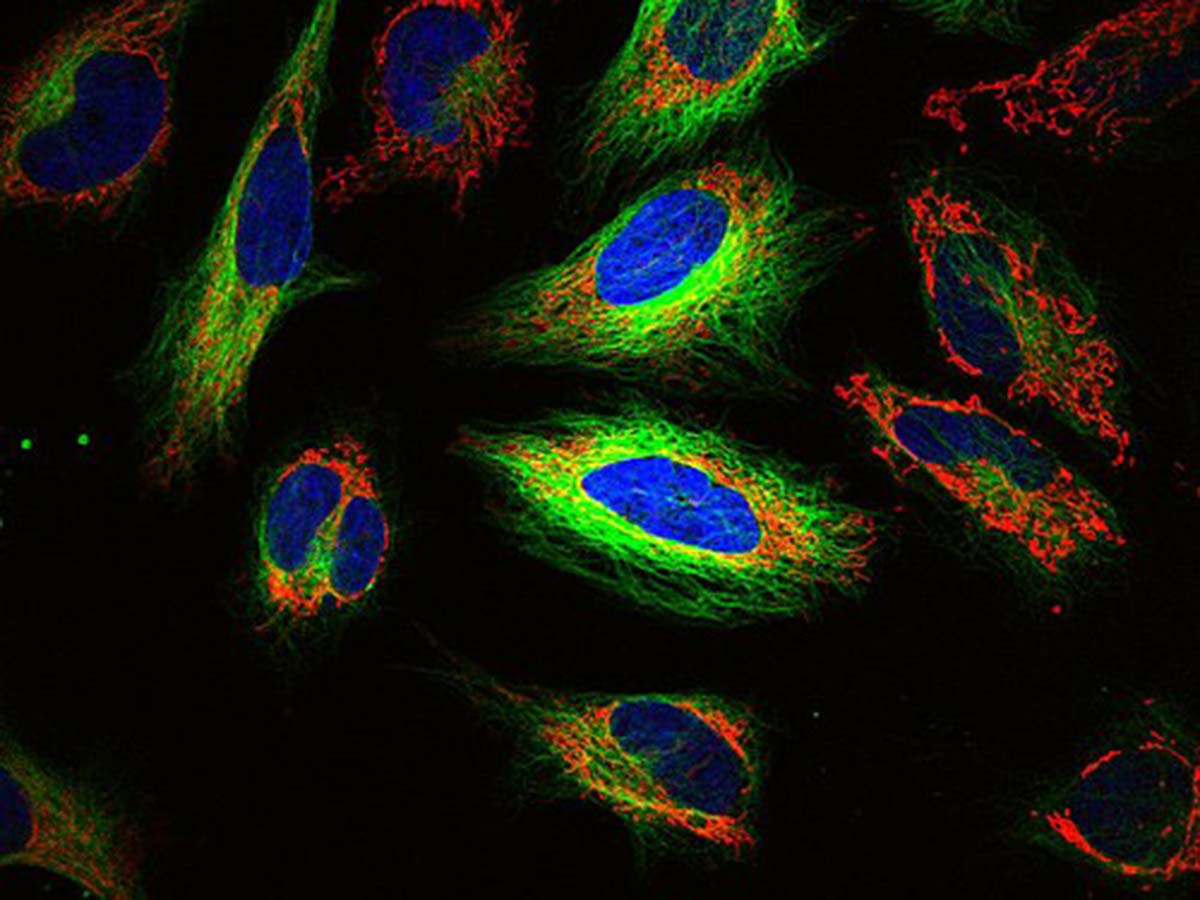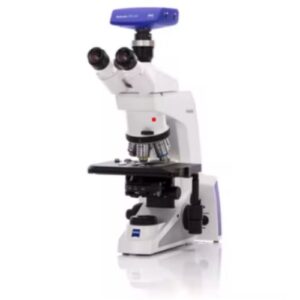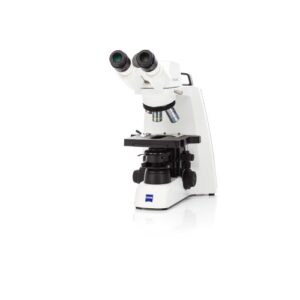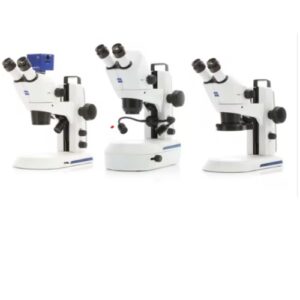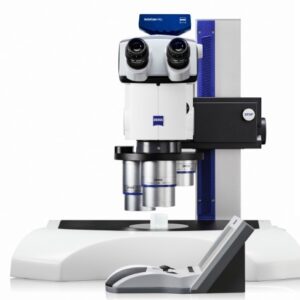Source: Wikipedia
What is fluorescence imaging?
Fluorescence imaging is the use of fluorescence, or the emission of light by a substance that has absorbed light or other electromagnetic radiation, to study the properties of organic or inorganic substances. Basically, this means that if you use a fluorescence microscope, it will irradiate the specimen with a specific band of wavelengths and in turn cause the specimen to glow. The results are quite stunning: beautiful colors and very high-contrast images.
Why would I use fluorescent imaging?
Fluorescence imaging has become an essential tool in the fields of biology, biomedical studies, and materials science. This technique is usually reserved for cases where high sensitivity is important. For example, fluorescence imaging can be used to study substances that are in low concentrations, below the resolution of a light microscope, or view substances that are invisible to traditional microscopy techniques. If you are studying living cells and tissues or protein tracing, fluorescence imaging is a perfect fit.
What products should I use for fluorescence microscopy?
Nuhsbaum distributes several high-end products ideal for fluorescence microscopy. Two great recommendations are the Leica DM4 B and DM6 B. Both are ideally suited to making your work life easier in biomedical research and clinical labs alike. You can optimize either system to your application with different contrast methods, automated functions, or with the illumination you prefer. Furthermore, you have the choice of halogen or LED illumination. LED illumination lights your sample homogeneously and with a constant color temperature, while also saving energy and avoiding bulb changes due to the LED’s lifetime of up to 25,000 hours. Halogen illumination, on the other hand, does not naturally come with the constant color temperature that LEDs offer. But with the Leica DM6 B, the unique Constant Color Intensity Control (CCIC) maintains a constant color temperature of 3,200 K. For more recommendations, check out our Fluorescence Research Stereo Microscopes.
Another great recommendation is the Leica EZ4 educational stereomicroscope with 4.4:1 zoom for entry level university and college courses. Keep students engaged by making school a fun place to learn. The Leica stereo microscopes offer a broad, varied field for experience and learning and are easy to integrate into classroom instruction. Special microscopy or specimen preparation skills are not required in order to observe whole objects found in nature such as plants and insects, or items from around the house such as coins, stamps, pieces of cloth or an old clockwork. You can also enlighten your class with fluorescence. There are unlimited applications for fluorescence in the science classroom. With a simple add-on by NIGHTSEA, fluorescence is as economical as it is practical for the lab. From sorting fluorescing zebrafish embryos to picking Drosophila larvae, bring the “WOW” factor into the classroom with amazing, colorful procedures and experiments.
The world of fluorescence imaging is fun and exciting for any skill level and any age. If you’re looking to get started, contact one of our sales representatives for more information and an individualized consultation.

